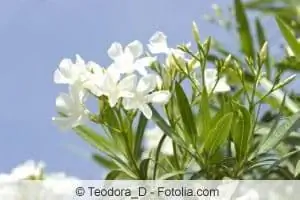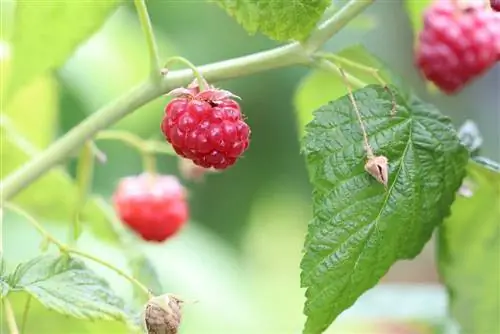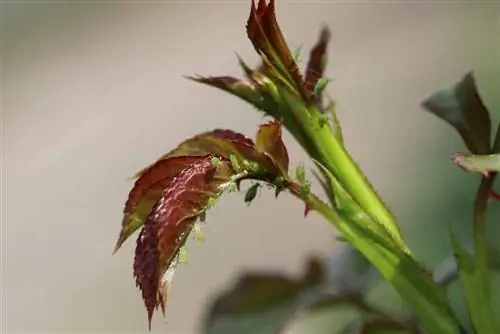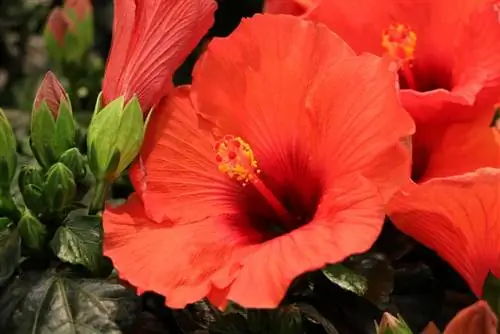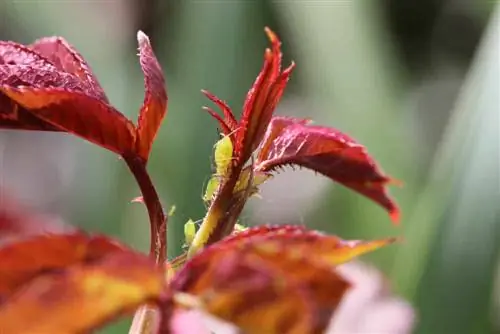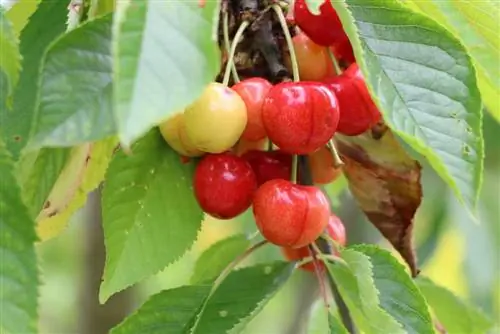- Author admin [email protected].
- Public 2023-12-17 03:39.
- Last modified 2025-01-24 12:45.
Once you see aphids on the oleander, you have to act quickly. Because no matter what type of aphid it is, they all multiply explosively. Because of their special preference for oleander, the yellow aphids are also called oleander aphids. Perfect location and care conditions for the oleander can reduce the risk of an infestation but rarely prevent it completely. Therefore, an important additional care measure should be to regularly examine the oleander for possible infestation in order to be able to address it as early as possible.
Yellow aphid
Together with the Mediterranean oleander, the yellow aphid also conquered Central Europe. She specializes in plants from the Apocynaceae family. The Aphis nerii (oleander aphid) belongs to the family Aphidoidea (aphids) from the suborder of plant lice (Sternorrhyncha). The yellow aphid is one of over 800 species native to Central Europe alone. With their yellow color they give a warning to all predators. In addition, they can secrete a toxic secretion, cardenolides (cardiac glycosides), to defend themselves. They get their color and chemicals from the sap from the dog poison plants, i.e. our oleander. This poison causes deformities or disturbed behavior in many predators. Whether and how strongly the poison affects the enemies depends on the concentration of the poison in the plant. If it is too low, the living aphids also become victims of lacewing larvae, ladybirds and spiders. There are only female aphids; they reproduce through parthenogenesis (producing virgins, through clones of the mother). As soon as a host plant is overcrowded or is stressed by enemies, the lice secrete certain scents (pheromones). These provide the incentive to give the next generation of aphids wings. These can then look for new plants in a new environment.
Damage
The yellow aphids, like all aphids, feed on the sap of the plant. The high proportion of carbohydrates in the plant sap cannot be utilized by the aphid. They excrete it again as so-called honeydew, a sugary solution. This sticky substance attracts other insects and is also an ideal breeding ground for fungi and viral diseases. Most of the time, the greatest damage to the plant is not caused by the lice themselves, but rather by a subsequent infestation of fungal diseases and plant viruses. This honeydew serves as a food source for wasps, bees and ants. The ants even enter into a special form of symbiosis with the lice and thus support their spread. Similar to our livestock farming. The lice are first discovered on the undersides of leaves, as well as on young buds and leaf shoots. Shoot tips and leaf axes are moistened with a sticky secretion. This leads to discoloration of the leaves, which later curl up. The flowers develop deformations and shoot anomalies arise. The honeydew promotes the settlement of black fungus and the dangerous sooty mold fungus.
Home remedies
Most of the time, an infestation of aphids can be kept in check or completely eliminated using home remedies. Means for spraying the affected areas and with good effect are:
- Tobacco brew
- Stinging nettle broth
- soft soap
- dishwashing liquid
- Stone dust, wood ash
Soap solution as a spray is made as a 2% solution of soft soap, curd soap, or dishwashing liquid and water. The affected areas are sprayed over several days. This is the first remedy that can be used immediately in the event of a mild infestation. To make tobacco brew, boil approx. 50 g of pure tobacco or cigarette residues in a liter of water and filter the brew through a cloth. An additional addition of soapy water has proven successful. To make a nettle brew, use approximately 500g of nettle per 5 liters of water. Let both steep in a bucket for 1 to 2 days, then pour off the brew.
Tip:
Stinging nettle and tobacco broth can also be added to the irrigation water. There they act against the aphids via the roots on the sap in the upper parts of the plant.
Stone dust or wood ash is sprinkled on the affected areas to suffocate the lice. The plant must then be cleaned. For a lasting effect, the plant should first be cleaned as thoroughly as possible of the sticky liquid with clear water. Repeated applications of the above-mentioned home remedies over a longer period of time are definitely necessary to prevent further infestation.
Plant protection products
If the aphid infestation is already very advanced and all home remedies fail, it may be necessary to use plant protection products to save the valuable oleander.
Neem based pest repellent
There are various ready-made preparations available to buy made from the active ingredient of the neem tree. If you want to be sure that you are fighting pests with the purely natural product of the neem tree, you can make your own mixture of pure neem oil and water. Cream or milk are suitable as emulsifiers. Example recipe: Mix 2 tablespoons of neem oil in half a cup of lukewarm cream or milk and then mix with 1 liter of water. The product should then be sprayed onto the affected areas daily until all the lice are gone. The agent stops any further development of the aphids. When added to irrigation water, it has a time-delayed, systemic effect via the roots of the plants on the sap that the aphids suck.
Plant protection sticks
When placed in the pot, special plant protection sticks or suppositories act on the aphids via the roots of the plants. These can help when an infestation begins or can also be used as a preventative measure.
Special chemical pesticides
Chemical agents against aphids should only be used in emergencies. Although they help in almost every case, they are always a danger to the beneficial insect world. They should not be used on flowering plants in particular, in order not to harm the bees.
Tip:
If you can no longer fight a severe infestation on your precious oleander, you could also take the tree to a nursery for treatment. Here you have approval for the use of toxic substances that are not available to the end user.
Predators
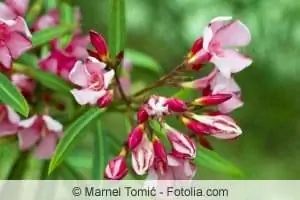
Aphids have natural enemies, including ladybirds, ladybird larvae, hoverfly and lacewing larvae, various beetles, spiders and birds. Especially when it comes to yellow aphids, these are sometimes less successful. Ladybird larvae and lacewing larvae are available from specialist retailers, but may fail due to the yellow aphid's poison.
Toleration
Yes, why not? This not only seems to be a very convenient solution, but also a very natural “non-control measure”. However, this method is only recommended if the oleander is in a relatively adequate environment. Neither in the pot on the summer terrace nor in the winter garden is there the appropriate environment to ensure natural balance. A biotope in which neither the plant nor the lice or predators can be seriously harmed. However, if someone has an oleander tree in the garden of their Spanish holiday home, this measure is definitely worth considering.
Conclusion
The oleander is not exactly an easy-care, everyday plant in our latitudes. Anyone who gets it to grow and bloom successfully over several years will always try to keep pests and diseases away from it. A regular inspection for pest infestation is just as important as appropriate control measures, for example in the case of a yellow aphid infestation.

